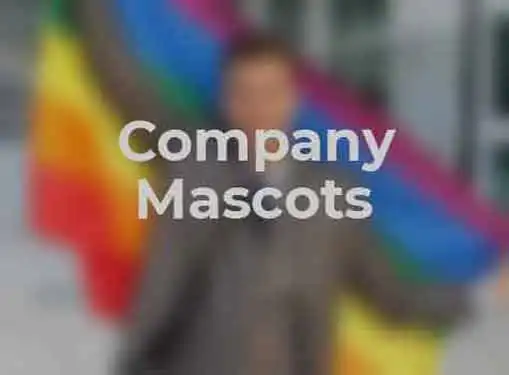Local Marketing
Company Mascots
Written by Jay Shapiro for Gaebler Ventures
Clown-a-phobes might not think Ronald McDonald has appeal, but that didn't stop the burger chain using the clown as their mascot. With mascots you need to appeal to the masses, not the few -- but that's sometimes easier said than done.
Everyone knows that Ronald McDonald, the rather Steven King-ish, It-style looking clown represents the fast food chain McDonalds.

It helps that the company name is incorporated into his. He's been around so long we're accustomed to him, just as we are the Jolly Green Giant who is the figurehead for the Green Giant range of vegetable products.
The Pillsbury Dough Boy is another case in point; we can't help but know which product he promotes – again the clue is in the name. The same goes for Aunt Bessie – the baking brand is popular both in the US and the UK and the mascot… well we can't fail to feel that all our baking endeavors are safe in the hands of that friendly looking older lady, now can we?
So what's the secret with choosing a good company mascot?
In all honesty, ad men would probably tell you there isn't a single secret, but many. Perhaps the most important aspect when deciding on a mascot is to try to create one that will resonate with your target audience as well as represent your product.
Today's' mascots, quite rightly, need to be of the PC variety and should never be representative of sexist or racist views, to name but two no-nos. In addition they need to be health and safety aware.
If you're selling a food product, an overly chubby mascot might put across the subliminal message that your product could cause obesity. Even if, in reality, eating too much of your product would cause people to put on weight, you don't want to convey that in your mascot. Gone are the days when chubby meant friendly. Perhaps no other brand is more aware of this than the UK's Little Chef chain of motor stop service restaurants. They were obliged to change their rather rotund chef logo to one that showed the cook in a more slender light. No matter that the foods on sale at the restaurant would very likely cause the waist line to expand if consumed with regularity. In the world of mascots it's not exactly reality you are aiming to portray. It's something in between reality and the ideal.
The ideal mascot's image should be formulated, obviously, on the positive aspects of your product or company.
Having said that, you know you can't please all of the people all of the time. If McDonalds had tried to do this they would never have opted for the clowny Ronald as a mascot for fear of alienating the few customers who might suffer with coulrophobia!
Aim for the largest area of your target audience when conceptualizing a mascot's image.
The public can't ever be second guessed and sometimes the most peculiar mascots will be the ones they embrace. Others which seemed set to appeal merely irritate or even revolt prospective clients. The Green Giant, when first appeared was not quite the jolly creature we know him as today – in fact he looked positively fiendish and reminiscent of a sinister version of Twizzle, the equally disturbing character that featured in children's books in the 1960s.
The message here? Carry out as much market research as you possibly can regarding the way people view mascots. Creating you own shouldn't be a nightmare, and the results shouldn't cause them either.
Jay Shapiro is a freelance writer based in the UK. Jay has a particular interest in the emotive aspects of the entrepreneur's character. "Alongside the nuts and bolts of business, the character of the person is often the ingredient responsible for success."
Share this article
Additional Resources for Entrepreneurs

Conversation Board
We greatly appreciate any advice you can provide on this topic. Please contribute your insights on this topic so others can benefit.